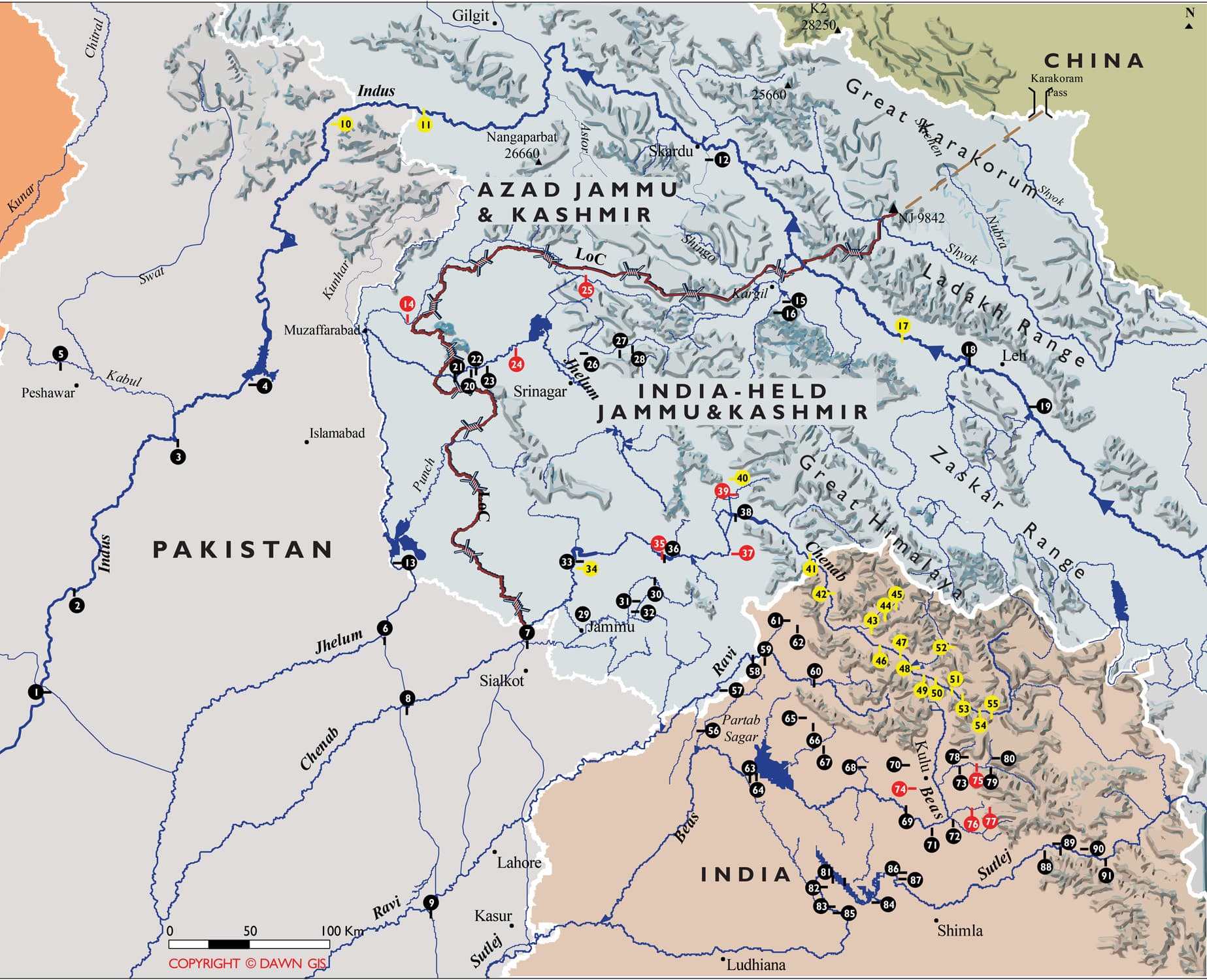
By Saima Afzal 25 October 2022
Indian Prime Minister Modi-led BJP government has approved the construction of seven hydropower dams in the Kishtwar region, including projects in Rattle, Dul Hasti, Pakal Dul Project, Kiru, Kwar, Bursar, and Kirthai in the disputed territory of Kashmir. According to media reports, these dams will generate 5,190 megawatts of hydroelectricity as part of the Indian government’s push to shift from coal to renewable energy. But in the lush forests and valleys of Kishtwar, the dams threaten delicate flora and fauna, and the ways of life of semi-nomadic and farming communities. Various analysts view that these dams also impact the region’s seismicity, silt discharge into the river, transport and road construction, ambient air quality, local water sources, groundwater, and the region’s overall water security.
However, India has already started work on four of the seven dams but several scholars believe that these dams would create a huge impact environment and humans. Vast tracts of the forest will be destroyed, and fertile agricultural land will be submerged, displacing over 20,000 people. The power projects are coming up at the cost of the people, who forfeit their resources without getting anything from the government. Since India’s independence in 1947, over 3,300 big dams have been built across the country, leading to the forced displacement of millions and local people have been particularly affected.
Though the Indian government painted a rosy picture before acquiring the landform local people and offers compensation to those displaced, but what the Indian government has paid them is not sufficient for them to buy new land. Gujjars and Bakerwals whose main occupation is rearing cattle are among the inhabitants of the Kishtwar region protesting the dams’ construction. These communities depend on forests and cultivate forest land to grow rice and lentils. At higher altitudes where fodder is unavailable, their cows eat wild forest grass. Such a situation will push them into poverty.
Likewise, the Chenab River flows into Kishtwar from Himachal Pradesh and flows out to four other districts in Jammu and Kashmir before reaching Pakistan. Construction of any big dam poses ecological risks, and having seven dams close to each other will increase those risks in Kishtwar. Therefore, the concerns about dam construction reach beyond India to Pakistan. Though these dams can have impacts on Pakistan because by altering the flow of the Chenab, the dams could decrease the water available to Pakistani farmers. The project has ruffled political feathers in both countries, India is violating a bilateral Indus Water treaty regarding the control over the rivers in the area. However, India is building dams on all rivers flowing into Pakistan from IIOJK to regain control of the water of western rivers in violation of the Indus Treaty. India is doing this under a well-thought strategy to render Pakistan’s link-canal system redundant & destroy the agriculture of Pakistan.
In August 2019, India abrogated Articles 370 and 35-A of its constitution, which provided special status to the state of Jammu and Kashmir, and divided it into two Union Territories. After this development, analysts viewed that there may be a water conflict between India and Pakistan as India has hastened the construction of these dams. Sixty-two years after signing the Indus Water treaty between India and Pakistan, it continues to survive despite three wars between India and Pakistan, several differences, and many conflicts. However, the true spirit of the treaty dies with the violation of India, and Pakistan reiterated time and again that India is building dams by violating the Indus Water treaty. On 17th October 2022, the World Bank announced the launch of two parallel lawsuits to settle Pakistan’s concerns over two hydropower projects that violate the Indus Basin Treaty. World Bank is also setting an inquiry with the Court of Arbitration & Neutral expert over the India & Pakistan Indus treaty water dispute in Kishenganga and Ratle Hydroelectric power plants are surfacing. India objects to World Bank’s appointments on Indus Water Treaty.
In nutshell, the Indian government claims that these projects will bring development to the region but the local inhabitants viewed that the continuous construction of dams at such a large scale would only increase the disaster potential that includes flash floods and landslides. A 2018 study conducted by seismologists from the Jawaharlal Nehru Centre for Advanced Scientific Research in the Indian state of Karnataka revealed that an earthquake of a magnitude of 8.5 or more is overdue in these parts of the Himalayas. Almost all these dams are either on the fault lines or around the fault lines. Water percolation as a result of their construction will go into the fractures inducing and triggering the earthquake. Moreover, by constructing dams in occupied territory India is depriving Kashmiri people of agriculture land which will further push them into poverty.
*The author is an independent analyst and holds M.Phil in Peace and Conflict Studies.
